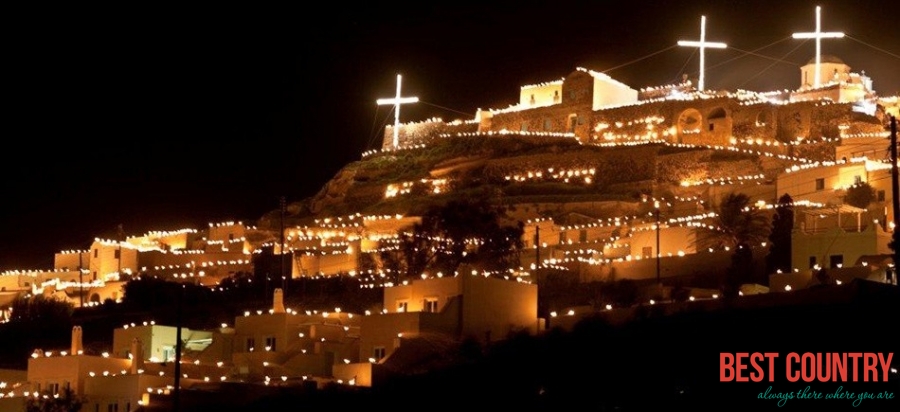Easter traditions in Greece

Easter Celebration In Greece
Apokreas, the Greece Carnival season, precedes the 40 days of fasting, which lead up to the Easter day. The carnival is important to Orthodox, in the same way as Mardi Gras is important to Catholics. In Athens, during the last two weekends of Apokreas, people dress up in costume and go to the Plaka, hitting each other with plastic clubs that squeak, and throwing confetti. In Thrace and Macedonia, young women in traditional clothing called the 'Lazarins', go around the villages, singing traditional Easter songs.
On Saturday before Easter Sunday, the Orthodox Patriarch of Greece breaks the seal of the door of the tomb of Christ in the Church of the Holy Sepulcher in Jerusalem and emerges with the Holy Fire. The flame is then flown by Olympic Airways, accompanied by high-ranking priests and government officials to Athens airport, where it is met by an honor guard to the small church of Agia Anargyroi in the Plaka. From there, the light is distributed to churches all over Attika and the rest of Greece.
As the Saturday evening approaches, people congregate in the church, carrying unlit candles. At midnight, the priest announces the Resurrection of Lord Jesus Christ ("Christos anesti") and lets the people illuminate their candles of the Holy Flame, taken from Christ's nativity cave in Jerusalem. After the rituals are over, the priest blesses the food carried by people to the church, which are served on Easter Sunday.
After the late-night resurrection service of the Greek Orthodox Church, resurrection soup 'mageritsa' is served to the congregation. On Easter Sunday, spit-roast lamb is the centerpiece of the table. In the early morning, the spits will be turning in the courtyards and as the lamb, "kokoretsi" is slowly cooked, and the aroma of the roasting lamb whets the appetite of the hungry souls. Christopsomon, a round, flat loaf marked with a cross and decorated with red Easter eggs, is another Greek Easter delicacy that should not be missed out, when you are celebrating Easter in Greece.